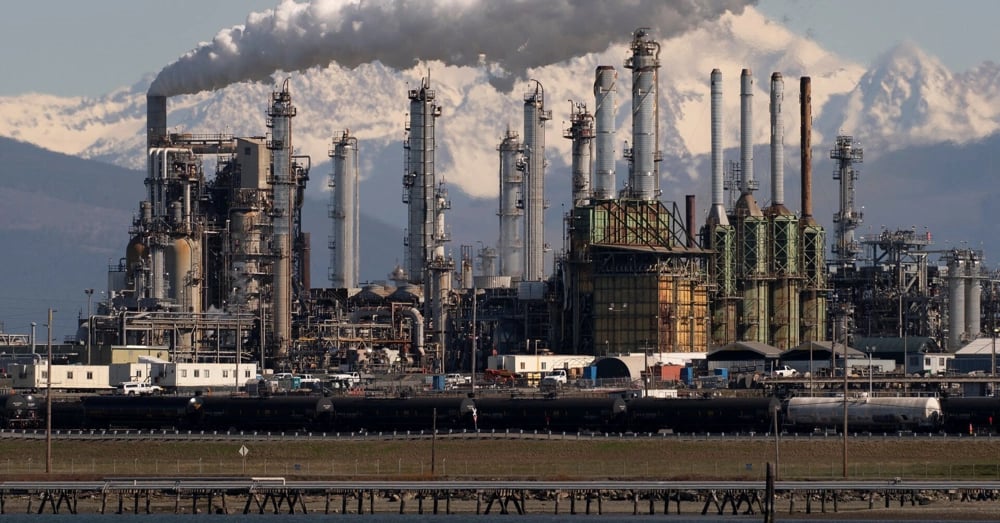Dollar Weakness Cushions Impact of Oil Price Surge Amid Middle East Tensions
A renewed wave of geopolitical uncertainty in the Middle East has reignited concerns of an energy price shock, with Brent crude and WTI crude both seeing upward pressure. Historically, such price spikes tend to hit oil-importing economies hardest, especially when accompanied by a strong U.S. dollar (USD). However, a rare window of USD weakness is offering temporary relief to countries outside the U.S., mitigating the inflationary and fiscal stress typically associated with surging oil prices.
This development marks a significant divergence from previous crises, where the dual blow of rising oil prices and dollar strength sharply deteriorated trade balances, weakened currencies, and fueled imported inflation across Europe and Asia. In this context, the current macroeconomic configuration could offer a buffer, although not an escape, from the broader ramifications of energy market volatility.
Analysis of the Energy-FX Nexus and Its Global Implications
Crude oil is globally priced in USD, making exchange rate dynamics a crucial factor in determining the real cost of energy imports. A stronger dollar inflates oil import bills in local currency terms, amplifying the impact on current account deficits and consumer prices. In contrast, a weaker USD lowers the effective cost of energy for non-dollar economies, even amid rising spot prices for crude benchmarks.
Current foreign exchange trends show a softening greenback due to a mix of monetary policy divergence, moderating U.S. Treasury yields, and slower economic data out of the United States. The DXY index, which measures the dollar against a basket of major currencies, has declined over recent weeks, lending support to EUR, JPY, and GBP—currencies of major oil-importing nations.
This temporary decoupling of oil price shocks from FX-driven inflation risk is particularly relevant for Europe, which remains highly dependent on energy imports and vulnerable to geopolitical supply disruptions. Meanwhile, emerging markets (EMs) in Asia and Latin America may see mixed effects, as some benefit from stronger terms of trade while others continue to battle capital outflows.

Key Facts Summary
Crude Oil Dynamics: Brent and WTI prices rise on Middle East tension
Currency Factor: Oil is traded globally in USD; a weak dollar offsets some of the cost for importers
Dollar Trend: DXY Index shows dollar depreciation amid easing U.S. economic data
Affected Regions: Europe and Asia benefit marginally from FX buffer
Inflation Impact: Lower imported inflation in non-USD economies reduces pressure on central banks
Market Reactions and Strategic Commentary
Financial markets have reacted with a blend of caution and tactical positioning. Energy stocks and commodity-linked currencies such as the Norwegian krone and Canadian dollar (CAD) have gained, while European equities (STOXX 600) remained relatively stable, reflecting investor belief that FX effects may neutralize part of the oil shock.
Bond markets in the eurozone and Japan show minimal upward adjustment in inflation expectations, a signal that traders view the current dollar weakness as a stabilizing factor. However, central banks remain on alert. The European Central Bank (ECB) and Bank of Japan (BoJ) have indicated close monitoring of energy and currency markets but have not shifted guidance materially.
Economists highlight the importance of this rare monetary alignment. According to analysts at ING and HSBC, "The recent depreciation in the USD acts as a shock absorber, especially for economies that would otherwise face imported inflation and fiscal tightening simultaneously."

Strategic Takeaways
Weaker USD Dampens Oil Shock: Non-U.S. economies face a smaller pass-through from crude price increases.
Europe Gains Breathing Room: Eurozone nations benefit from both FX and oil hedging amid fragile recovery.
Central Banks Remain Cautious: Inflation expectations are stable, but policy flexibility may narrow if energy prices continue to climb.
Emerging Markets Show Divergence: FX buffer may help Asian economies, while Latin American markets face mixed fiscal consequences.
Energy-USD Decoupling is Temporary: Sustained oil price hikes or a dollar rebound could reintroduce stagflation risks.
Temporary Relief with Structural Caveats
The current combination of elevated oil prices and a weaker USD offers a rare reprieve for oil-importing economies, but this reprieve is likely to be short-lived. While the foreign exchange buffer softens the blow of geopolitical energy shocks, structural vulnerabilities remain, especially if the dollar regains strength or supply disruptions deepen.
Policy responses will hinge on how durable this USD softness proves to be and whether oil prices stabilize or continue to climb. For now, the interplay between currency movements and commodity markets is offering an unusual and critical relief valve—one that underscores the interconnectedness of global macroeconomic forces in times of geopolitical crisis.















Comments
Strategic decisions like this one are setting new benchmarks for innovation-led capital deployment